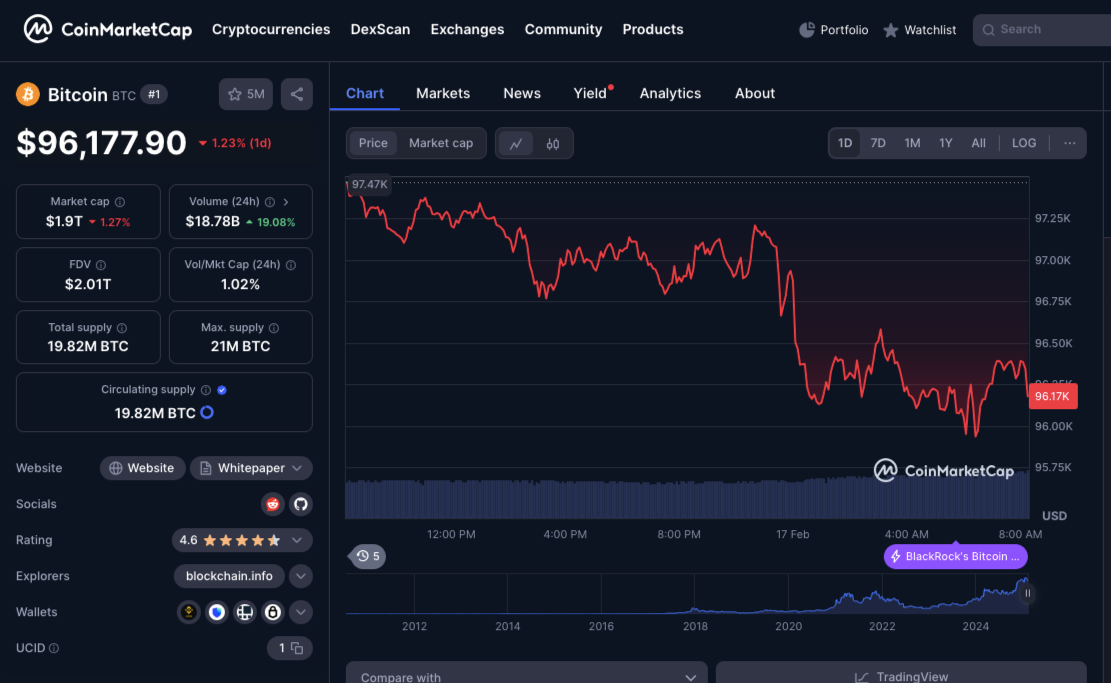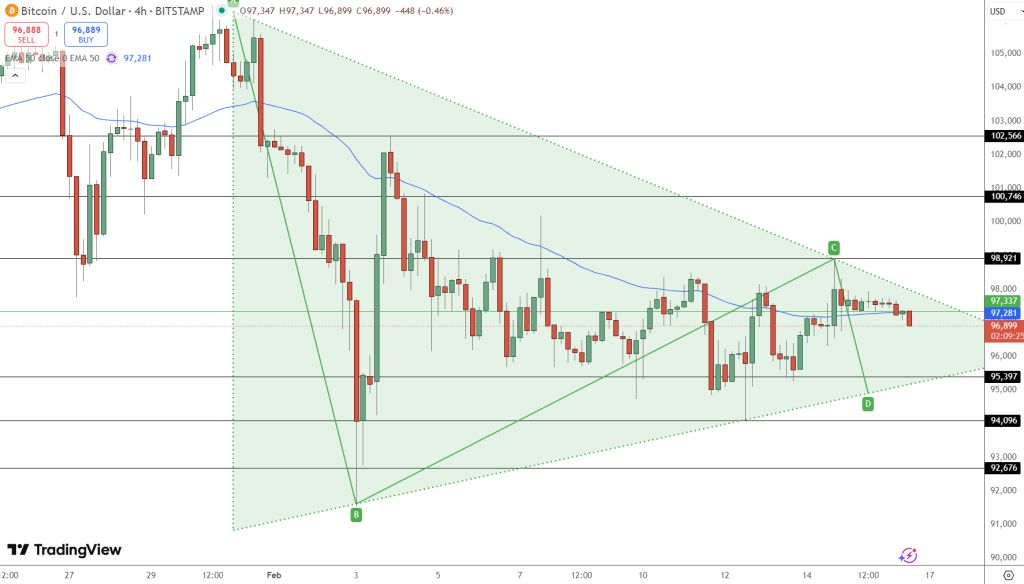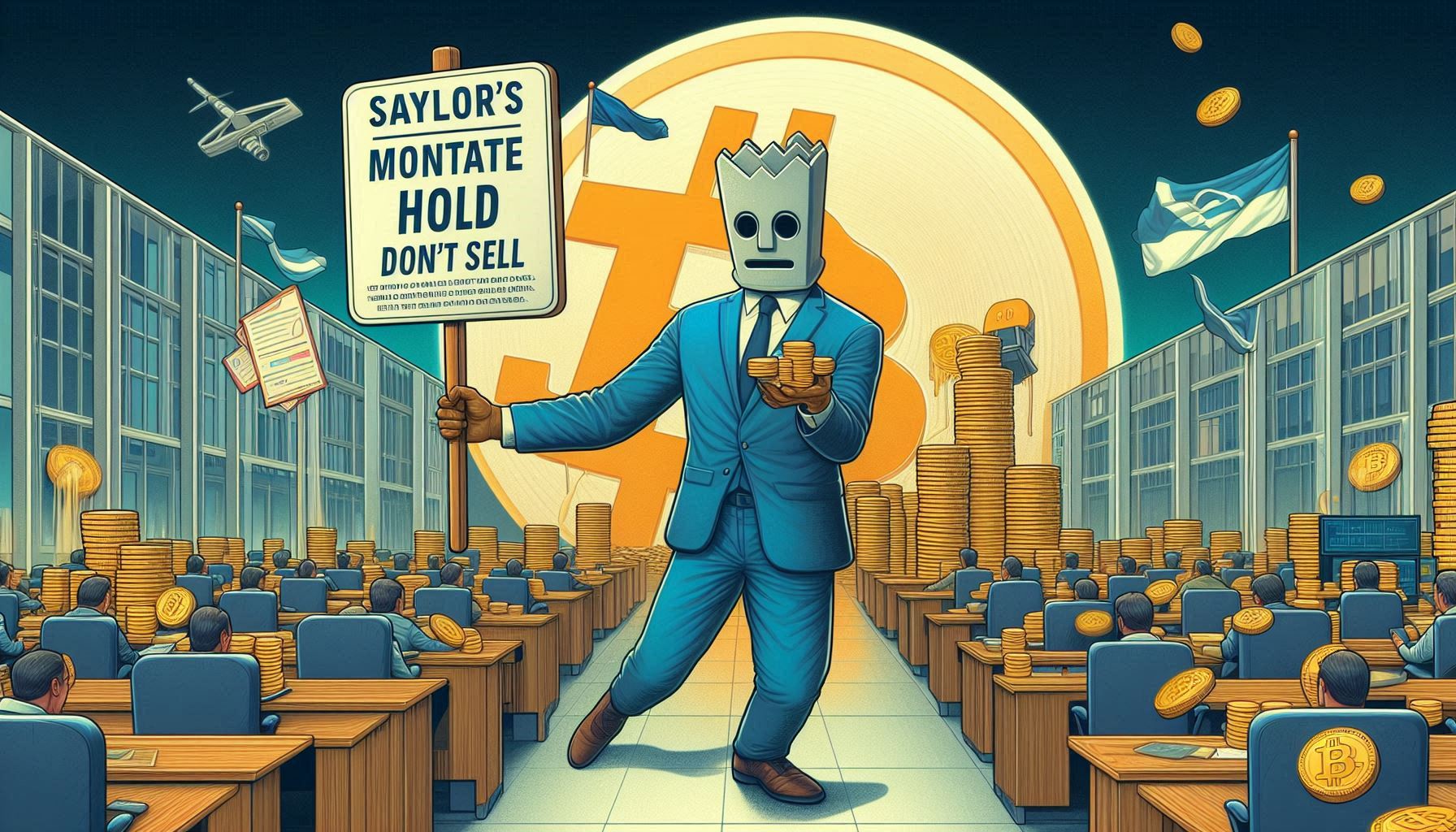At a time when selling pressure and uncertainties plague the cryptocurrency market, Michael Saylor, strategy co-founder and arguably the most vocal Bitcoin maximalist, has an unambiguous mandate: Buy and Hold, Don’t Sell Your Bitcoin! This latest statement from him on the importance of Bitcoin’s network effect reverberates strongly among investors as the digital asset seems keener to break the $100,000 mark again. Along Saylor’s line, it is a timely reminder of Bitcoin’s long-haul value against the persistent short-term noise that sometimes breeds doubt and fear in the marketplace.
- Saylor’s Message and What It Means
- Market Sentiment and Price Action
- Technical Analysis: Resolving Key Price Levels
- Long-Term Outlook: Is Bitcoin Still Bullish?
- Conclusion
- FAQ
- 1. What is the central message that Michael Saylor has for Bitcoin?
- 2. What is the current market situation of Bitcoin?
- 3. What are the macroeconomic factors involved in price action by Bitcoin?
- 4. Must investors then really focus on short-term price changes instead of Bitcoin’s long-term potential?
- Glossary
- References
Saylor’s Message and What It Means
Even if the world is going crazy, Saylor’s not changing his mind on Bitcoin. From news sources:
“When you buy Bitcoin, you strengthen the network. When you sell Bitcoin, you weaken it.”
That’s a strong statement. Regardless of day-to-day price fluctuations of Bitcoin, it’s the network effect and the confidence of the holders that gives value to Bitcoin. Since holding BTC will eventually create a stronger network, Saylor says hold. And Saylor’s advice is don’t sell in the short term, which is the foundation of the long term – as he says; you’ll have to benefit from the big upswing.
Market Sentiment and Price Action
At the time of this writing; Bitcoin is sitting around $96,000. It’s struggling to get back to its highs and is facing multiple macro headwinds. But the recent US inflation data showing CPI overlapped in January has led to liquidation in risk assets; especially Bitcoin. This has made the market even more cautious and investors are on pause.

There’s another big factor adding to the uncertainty in the market: Bitcoin ETFs had huge outflows this week with Bitcoin ETFs seeing $650.8 million get wiped out while modest inflows of $70.6 million over one day is basically nothing. This short term institutional selling is adding another layer of complexity and making it hard to understand this Bitcoin price action. Investors are wondering if this is just a blip or a warning sign of deeper corrections to come.
Technical Analysis: Resolving Key Price Levels
Looking further into the Bitcoin price chart, one can see current price action within a symmetrical triangle which heralds consolidation before the real breakout. It faces immediate resistance level at about $97,350 which coincides with the upper boundary of the triangle alongside 50-day Exponential Moving Average, thereby offering a strong objection for Bitcoin to surmount before the bullish trend resumes.

While this area is key for upside resumption should Bitcoin be $97,350 without a relenting pullback, any inability to maintain above the support at $96,800 might lead to individuals calling for an increasing selling pressure to drag price to support areas of $95,400 and potentially $94,100. Interests on the Relative Strength Index (RSI) are neutral yet call polity on the believes, as the market seems apprehensive, whereas the Moving Average Cross Convergence Divergence signals weakness of momentum. These contrasting signals simply suggest a phase of price compression which could be time-honoring for the market to gain strength on its next move.
Some analysts are cautiously optimistic despite the current bearish signs. If Bitcoin is able to break the $97,350 mark, this would invalidate the bearish count and, instead, bring forth a wave of bullish momentum for Bitcoin. However, this bullish event is dependent upon a manyfold line of determinants, including a positive reversal of ETF outflows and macroeconomic factors stabilizing.
Long-Term Outlook: Is Bitcoin Still Bullish?
The long-term outlook for Bitcoin continuously remains hotly debated and analytically estimated, whereas the short term could bear some challenges. Long-term supporters of Bitcoin argue that there would be several variables sustaining a bullish trajectory under those conditions. First, Bitcoin’s limit on supply, coupled with rising adoption ratios from both retail and institutional investors, inherently justify the prolonged demand. Then the network effect— which is further aggrandized each time a holder decides against selling— also lends the underlying value proposition to Bitcoin.
With improvements in technology, administration, and the evolving wider digital asset ecosystem, the future is favorable to Bitcoin. In the meantime, the near term, over weeks and months, will see an environment suggestive of caution, but the real strong macro story for Bitcoin is resilience and potential.

Traders should balance volatility with Bitcoin’s long-term fundamentals. In perspective, if the conditions become favorable and breakout from consolidation that will intensify bullish momentum toward the crypto-asset, it shall validate Saylor’s call of holding Bitcoin during any market wreckage.
Conclusion
Saylor’s still-relevant mantra “hold Bitcoin” aptly embodies the notion that Bitcoin can have long-term value, despite being in the eyes of the storm for some time. Below the symbolic level of $100,000, technical indicators of Bitcoin are providing mixed scenarios of consolidation and possible breakout. With inflation and tight monetary policy among its macroeconomic challenges, innovation and projects such as BTC Bull help bring forth the dynamic nature of the crypto space.
While the short-term is uncertain; ultimately, however, the near-term outlook remains mixed; the fundamentals that underpin its value continue to hold strong. Investors should try to think outside immediate price movements and see the broader story that each holding decision strengthens the network and makes a more durable ecosystem of digital asset under duress. In such turbulent times; being patient with a future perspective might be the key that unlock access to the full potential of Bitcoin.
Stay updated with Deythere as we’re available around the clock; providing you with updated information about the state of the crypto world.
Legal Disclaimer
This article is intended for informational purposes only and does not constitute financial advice. Readers should conduct their own research and consult with a certified financial advisor before making any investment decisions.
FAQ
1. What is the central message that Michael Saylor has for Bitcoin?
Michael Saylor very firmly advises buying and holding bitcoins. “You buy bitcoins. You strengthen the network. You sell bitcoins. You weaken the network,” his mantra underlining that it is for long-term value.
2. What is the current market situation of Bitcoin?
Presently; Bitcoin is trading below the $100,000 price; and technical analysis indicates a period within a symmetrical triangle. Immediate resistance is noted around $97,350 with support levels to $96,800 and lower.
3. What are the macroeconomic factors involved in price action by Bitcoin?
U.S. inflation is high, ETF outflows, and soon-to-be-announced contractionary monetary policy from the Federal Reserve are the three short-term reasons Bitcoin’s price remains cloudy, although the average economy’s fundamentals are relatively strong for the long term.
4. Must investors then really focus on short-term price changes instead of Bitcoin’s long-term potential?
It is true that no market is perfect and short-term fluctuations are almost part of every volatile market; however; one very strong argument that many economists, including Michael Saylor, propound is that one should consider the long-term fundamentals of Bitcoin and the network itself as the main sources of future value.
Glossary
Bitcoin: A decentralized digital currency, not very easy to get by due to the fixed supply, volatile, and a potential long-term investment.
Symmetrical Triangle: A technical chart pattern indicating a particular period of consolidation before the breakout in prices.
ETF: Exchange-Traded Fund, a kind of investment fund traded at stock exchanges, common for institutional investors.
RSI (Relative Strength Index): A momentum oscillator that is used as a measure for the speed and change of pricing movements within a market.
MACD (Moving Average Convergence Divergence) : A momentum indicator that follows trend and indicates the relationship between two moving averages of a security’s price.
Network Effect: A situation where the greater the numbers of participants there are, the richer a good or service becomes-a reality especially in decentralized networks like that of BTC.
Staking: The act of keeping money in a digital cryptocurrency wallet to participate in validating transactions within a cryptocurrency. In return for such support, rewards are usually earned.



















































































































